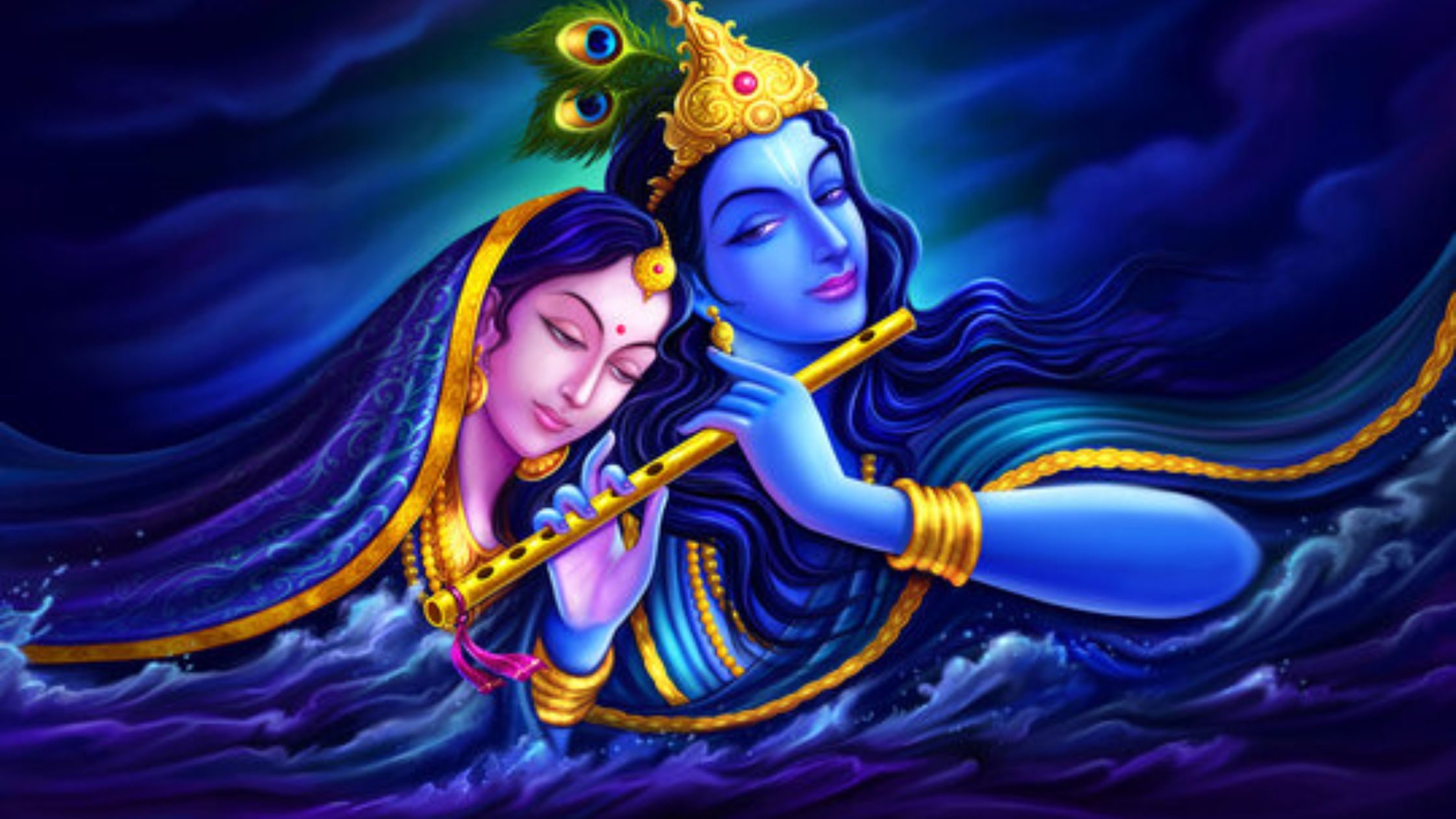Introduction
Krishna, a central figure in Hinduism, is much more than a historical or mythological character; he embodies the essence of divinity, love, and cosmic wisdom. As an avatar of Lord Vishnu, Krishna’s life is a captivating narrative that unfolds in the epics of the Mahabharata and the Bhagavad Gita. In this exploration, we delve into the multifaceted persona of Krishna, examining his early life, divine exploits, philosophical teachings, and enduring impact on spirituality.
Early Life and Divine Birth: Krishna’s tale begins in the sacred land of Vrindavan, where he is born to Devaki and Vasudeva amidst tumultuous circumstances. His divine birth, marked by celestial events and the miraculous exchange to protect him from the tyrant Kansa, sets the stage for a life filled with profound purpose and cosmic significance.

Childhood Exploits: Krishna’s childhood, spent in Vrindavan, is adorned with enchanting exploits known as “leelas.” His endearing escapades, from stealing butter (Makhan Chor) to playing the flute and charming the gopis (cowherd maidens), highlight the playful and mischievous aspect of his divinity. Each story carries profound symbolism, conveying spiritual truths through the innocence of childhood.
Kaliya Mardana and Other Divine Feats: One of the most celebrated episodes in Krishna’s childhood is the subduing of the serpent Kaliya in the Yamuna River. Krishna dances on the serpent’s multiple hoods, showcasing his divine strength and grace. These divine feats not only demonstrate Krishna’s prowess but also emphasize his role as a protector of dharma and a harbinger of divine justice.
Govardhan Puja: The Lifting of Mount Govardhan: The episode of Govardhan Puja exemplifies Krishna’s compassion and the significance of humility in spirituality. When the residents of Vrindavan are threatened by torrential rains, Krishna lifts Mount Govardhan on his fingertip to shelter them. This selfless act underscores the importance of devotion and the boundless nature of Krishna’s divine love.
Radha-Krishna: The Eternal Love Saga: The love between Radha and Krishna, celebrated in poetry, art, and devotional hymns, transcends the mundane and represents the union of the individual soul (Atma) with the Supreme Soul (Paramatma). Their divine love is considered an allegory for the soul’s longing for union with the divine, emphasizing the spiritual significance of Krishna’s relationships.
Mahabharata and the Bhagavad Gita: Krishna’s role in the Mahabharata, particularly in the Kurukshetra War, is pivotal. As the charioteer and counselor to Arjuna, he imparts the timeless wisdom of the Bhagavad Gita. The Gita is a philosophical discourse on duty (dharma), righteousness, and the path to self-realization. Krishna’s teachings in the Gita serve as a guiding light for seekers on the path of spiritual awakening.
The Universal Teacher: Krishna’s teachings in the Bhagavad Gita encompass various paths of spirituality, including Karma Yoga (path of selfless action), Bhakti Yoga (path of devotion), and Jnana Yoga (path of knowledge). His universal teachings emphasize the importance of performing one’s duties with dedication, surrendering to the divine, and realizing the ultimate truth.

Rasa Leela: The Divine Dance of Love: The Rasa Leela, a celestial dance performed by Krishna with the gopis, holds profound spiritual symbolism. It represents the ultimate union of the individual soul with the Supreme, transcending the limitations of the physical world. The Rasa Leela is a divine expression of love, devotion, and the eternal bond between Krishna and his devotees.
Symbols and Iconography: Krishna’s iconography is rich with symbols that convey deeper meanings. The peacock feather adorning his crown symbolizes beauty and divinity, while the flute he plays represents the soul’s call to the divine. The blue complexion signifies the infinite and transcendent nature of Krishna’s divinity, and the Sudarshana Chakra represents cosmic order and protection.
Devotees and Bhakti Movement: Krishna’s devotees, known as Bhaktas, have played a crucial role in the Bhakti movement, a devotional path that emphasizes surrender and love for the divine. Saints like Mirabai, Surdas, and Jayadeva have composed devotional poetry and songs expressing their deep connection with Krishna, contributing to the rich tapestry of devotional literature.
Impact on Arts and Culture:

Krishna’s stories have inspired countless artistic expressions, including classical dance, music, literature, and visual arts. The Ras Lila performances, paintings depicting Krishna’s life, and devotional songs resonate with devotees and enthusiasts alike, contributing to the cultural heritage of India and beyond.
Festivals Celebrating Krishna: Various festivals celebrate Krishna’s life and teachings. Janmashtami marks his birth, with devotees observing fasts, singing hymns, and reenacting scenes from his life. Holi, associated with Krishna’s playful use of colors, is another joyous festival celebrated with enthusiasm. These festivals foster a sense of community and devotion among Krishna’s followers.
Contemporary Relevance: Krishna’s teachings continue to be relevant in the contemporary world, offering guidance on navigating life’s challenges with wisdom and equanimity. The principles of selfless action, devotion, and the pursuit of spiritual knowledge outlined in the Bhagavad Gita resonate with individuals seeking meaning and purpose in their lives.
Conclusion
In conclusion, Krishna’s life is a tapestry woven with divine leelas, philosophical discourses, and timeless teachings that transcend the boundaries of time and space. From his enchanting childhood to the profound wisdom shared in the Bhagavad Gita, Krishna remains an eternal source of inspiration for seekers on the spiritual path. As the beloved deity who encapsulates the essence of divine love, cosmic harmony, and spiritual enlightenment, Krishna continues to captivate hearts and minds, inviting individuals to embark on a journey of self-discovery and transcendence.

